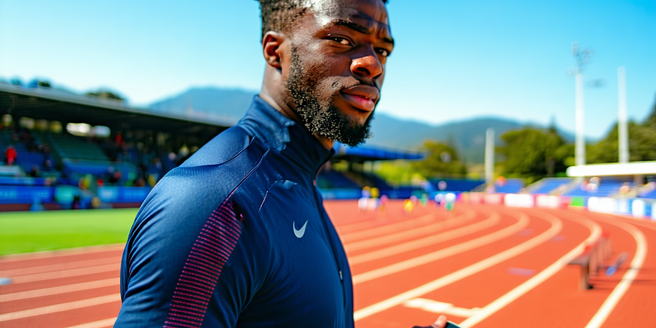Wearable Technology In Sports Performance

Introduction to Wearable Technology in Sports
Wearable technology has revolutionized sports by providing athletes and coaches with real-time data, enhancing both training and performance. These innovative devices, such as fitness trackers and smart clothing, monitor various aspects of an athlete’s physiology and movements. By collecting data like heart rate, speed, and distance, wearables offer insights into an athlete’s condition and progress. Coaches can leverage this information to tailor training programs and ensure athletes reach peak performance while minimizing the risk of injury. The increasing accessibility and affordability of wearable tech have made it an essential component of modern sports. As technology advances, the integration of artificial intelligence and machine learning with wearables promises even more sophisticated analytics and performance enhancements, marking a new era in sports training and competition.
Key Types of Wearable Devices Used in Athletics
Wearable devices have become integral to athletics, offering unique insights into performance and health. Common devices include fitness trackers, smartwatches, and heart rate monitors. Fitness trackers provide detailed analyses of steps taken, calories burned, and sleep quality, helping athletes optimize their routines. Smartwatches, often synchronized with various sports apps, offer real-time data and performance metrics. Heart rate monitors are crucial for gauging cardiovascular exertion, allowing athletes to maintain optimal intensity levels. Another innovative type is smart clothing, which integrates sensors into athletic wear, capturing biomechanics data. These devices collectively enable athletes to monitor their physiological parameters, providing an edge in achieving athletic goals. As this technology evolves, the precision and range of data accessible to athletes and coaches will continue to enhance sports performance.
How Wearable Tech Enhances Athlete Performance
Wearable technology significantly enhances athlete performance through comprehensive data collection and analysis. Devices monitor vital statistics such as heart rate, calories burned, and distance covered, offering athletes real-time insights to optimize their performance. These biometrics allow athletes to adjust their training intensity, ensuring they are pushing their limits without risking injury. Additionally, wearables can track recovery patterns, highlighting rest days’ importance for optimal performance. By providing data-driven feedback, wearable tech enables personalized training regimens tailored to individual athletes’ needs, boosting effectiveness and efficiency. Coaches can also leverage this data to develop strategic plans that capitalize on an athlete’s unique strengths and address weaknesses. As wearable technology continues to advance, its ability to enhance athlete performance through precise, actionable insights promises even greater potential.
Data Analysis and Its Impact on Training Regimens
Data analysis plays a pivotal role in transforming traditional training regimens into data-driven strategies, thanks to wearable technology. By examining metrics such as velocity, heart rate variability, and caloric burn, athletes and coaches can customize training sessions to enhance performance. This data allows for precise adjustments in training loads, ensuring athletes can achieve optimal results while minimizing overtraining risks. Wearable technology captures detailed insights into an athlete’s physiological responses to different exercises, facilitating informed decisions on workout intensities and recovery needs. Consequently, training regimens become more efficient, as athletes can focus on specific areas requiring improvement. The integration of data-driven analytics into sports ensures athletes remain at the forefront of performance optimization, reshaping the future of training methodologies and athlete preparedness.
Future Trends in Wearable Technology for Sports
The future of wearable technology in sports promises even more advanced and personalized innovations. One emerging trend is the integration of artificial intelligence and machine learning with wearables, enabling predictive analytics for injury prevention and performance enhancement. Devices will become more compact, offering non-invasive solutions that maximize comfort and usability. Innovations in sensor technology are set to offer even more precise monitoring of physiological parameters, expanding the range of metrics available. Moreover, the potential for wearables to integrate with augmented reality platforms offers athletes immersive training environments. As battery life improves, wearables will support longer sessions without interruptions, further enhancing their utility. These advancements will push the boundaries of how athletes train and compete, positioning wearable tech as a key driver in the future of sports performance.